#Diverse Nutrient Profile
Explore tagged Tumblr posts
Text
"Multigrain vs. Single Grain Roti: A Nutrient Showdown"
In this blog, we’ll compare the nutritional profiles of multigrain and single grain roti, helping you make an informed decision about which might be the best fit for your dietary needs. Multigrain Roti: Diverse Nutrient Profile: Multigrain roti typically combines various grains such as wheat, millet, oats, and others. This diversity contributes to a broader spectrum of nutrients, including…

View On WordPress
#alanced Energy Release#Diverse Nutrient Profile#Enhanced Fiber#Multigrain#Roti#Vitamin and Mineral Boost
0 notes
Text
The Ultimate Guide to Unveiling: Health Benefits of Veg Chicken
Introduction: Exploring the Wonders of Veg Chicken
Welcome to our comprehensive guide on the extraordinary health benefits of Veg Chicken! In a world where dietary preferences and health-conscious choices are becoming increasingly prevalent, veg chicken emerges as a delightful alternative that not only satisfies the palate but also offers a plethora of nutritional advantages.

Understanding Veg Chicken: A Nutritious Alternative
What Exactly is Veg Chicken?
Veg chicken, often referred to as plant-based chicken or meat alternatives, is a protein-rich substitute crafted from a blend of plant-derived ingredients. These innovative products mimic the taste, texture, and appearance of traditional chicken, providing a savory experience without the use of animal-derived components.
Nutritional Composition of Veg Chicken
Despite its meat-free nature, veg chicken boasts an impressive nutritional profile. Rich in plant-based proteins, essential vitamins, and minerals, this delectable alternative offers a wholesome dining experience without compromising on nutritional value. From soy and pea protein to vital nutrients like iron and B-vitamins, veg chicken serves as a commendable source of sustenance for individuals seeking a balanced diet.
Unveiling the Health Benefits of Veg Chicken
1. Protein Powerhouse
Protein serves as the building block of life, playing a crucial role in muscle repair, growth, and overall cellular function. Veg chicken, abundant in plant-based proteins, offers a fulfilling protein source suitable for vegetarians, vegans, and individuals looking to reduce their meat consumption. Incorporating veg chicken into your diet ensures adequate protein intake, supporting muscle development and enhancing satiety levels.
2. Heart Health Promotion
One of the most notable advantages of veg chicken lies in its potential to promote heart health. Unlike conventional meat products, which may contribute to elevated cholesterol levels and cardiovascular risks, veg chicken offers a heart-friendly alternative. Low in saturated fat and cholesterol-free, veg chicken aids in maintaining optimal blood lipid levels, reducing the likelihood of heart-related ailments and enhancing cardiovascular well-being.
3. Weight Management Support
In the pursuit of a healthy weight, dietary choices play a pivotal role. Veg chicken, with its low-calorie content and high protein density, emerges as a valuable ally in the battle against excess weight. By fostering feelings of fullness and satisfaction, veg chicken helps curb cravings and promotes portion control, facilitating weight management endeavors without sacrificing flavor or nutritional value.
4. Environmental Sustainability
Beyond individual health benefits, embracing veg chicken aligns with broader environmental sustainability efforts. Traditional livestock farming practices often exert a significant ecological footprint, contributing to deforestation, greenhouse gas emissions, and water pollution. In contrast, veg chicken production entails fewer environmental repercussions, making it a more eco-conscious choice for conscientious consumers striving to reduce their carbon footprint.
Incorporating Veg Chicken Into Your Culinary Repertoire
Creative Cooking Ideas
From savory stir-fries to succulent sandwiches, the versatility of veg chicken lends itself to a myriad of culinary creations. Experiment with diverse recipes and cooking techniques to unlock the full potential of this plant-based delicacy. Whether you’re grilling, sautéing, or baking, veg chicken serves as a canvas for culinary innovation, allowing you to craft wholesome meals that tantalize the taste buds and nourish the body.
Dietary Diversity Enhancement
Integrating veg chicken into your dietary regimen introduces a refreshing dimension of variety and flavor. Whether you’re a seasoned vegan or a curious omnivore, incorporating veg chicken into your meals diversifies your palate and broadens your culinary horizons. Embrace the culinary adventure and savor the delectable delights of veg chicken in all its forms, from classic favorites to bold, inventive dishes.
Conclusion: Embracing the Virtues of Veg Chicken
In conclusion, the health benefits of veg chicken are as diverse as they are remarkable. From its protein-packed prowess to its heart-healthy attributes and environmental sustainability, veg chicken embodies the epitome of nutritious innovation. By incorporating veg chicken into your dietary repertoire, you embark on a journey of culinary discovery and wellness enhancement, reaping the rewards of a plant-powered lifestyle.
11 notes
·
View notes
Text
interesting microbiome research:
"To investigate this, researchers at the University of Oxford tested 100 different gut bacteria strains individually and in combination for their ability to limit the growth of two harmful bacterial pathogens: Klebsiella pneumoniae and Salmonella enterica. Individual gut bacteria showed a very poor ability to restrict the spread of either pathogen. But when communities of up to 50 species were cultured together, the pathogens grew up to 1000 times less effectively than when cultured with any individual species. This 'community protection effect' was seen regardless of whether the bacteria were cultured together in vials, or in 'germ-free' mice (which had no resident gut bacteria at the start of the experiments).
Author Professor Kevin Foster (Departments of Biology and Biochemistry, University of Oxford) said: 'These results clearly demonstrate that colonization resistance is a collective property of microbiome communities; in other words, a single strain is protective only when in combination with others.'...
The researchers demonstrated that protective bacterial communities block pathogen growth by consuming the nutrients that the pathogen needs. By assessing the genomes of the different bacterial species, they found that the most protective communities were composed of species with highly similar protein compositions to the pathogenic species. They also used metabolic profiling to demonstrate that the protective species had similar demands for carbon sources as the pathogens."
13 notes
·
View notes
Text
BHARAT MORINGA

Title: Unveiling the Green Marvel: Moringa's Impact on Overall Health and Wellness
Introduction: In the quest for a healthier lifestyle, individuals are increasingly turning to nature's bountiful offerings to meet their nutritional needs. One such powerhouse of nutrients that has gained prominence in recent times is Moringa oleifera, often referred to as the "drumstick tree" or simply "Moringa." This remarkable plant has been celebrated for its exceptional nutritional content and numerous health benefits. In this blog post, we delve into the myriad ways in which Moringa contributes to the overall development of health.
Rich Nutrient Profile: Moringa is a nutritional powerhouse, boasting a diverse array of essential vitamins and minerals. It is a rich source of vitamin C, vitamin A, calcium, potassium, and iron, among others. These nutrients play crucial roles in supporting the immune system, maintaining bone health, and promoting overall vitality.
Antioxidant Properties: The leaves of the Moringa tree are loaded with antioxidants, such as quercetin, chlorogenic acid, and beta-carotene. These antioxidants help combat oxidative stress in the body, which is linked to various chronic diseases and aging. By neutralizing free radicals, Moringa aids in protecting cells from damage and supports overall well-being.
Anti-Inflammatory Benefits: Chronic inflammation is a root cause of many health issues, including heart disease and arthritis. Moringa possesses anti-inflammatory properties that can help reduce inflammation and alleviate associated symptoms. Regular consumption of Moringa may contribute to a lower risk of inflammatory conditions.
Blood Sugar Regulation: Research suggests that Moringa may help regulate blood sugar levels, making it a valuable ally for individuals with diabetes or those at risk of developing the condition. The plant compounds in Moringa have demonstrated potential in improving insulin sensitivity, contributing to better blood sugar control.
Cholesterol Management: Maintaining healthy cholesterol levels is crucial for cardiovascular health. Studies have indicated that Moringa may have a positive impact on lipid profiles, helping to lower bad cholesterol levels while promoting the increase of good cholesterol. This dual action supports heart health and reduces the risk of cardiovascular diseases.
Nutritional Support for Malnutrition: Moringa is an excellent source of nutrition, especially in regions where malnutrition is prevalent. The plant's leaves are a cost-effective and sustainable solution to supplement diets with essential nutrients, addressing nutritional gaps and promoting healthy growth, particularly in children.
Enhanced Energy and Vitality: The combination of vitamins, minerals, and antioxidants in Moringa contributes to increased energy levels and overall vitality. Regular consumption may help combat fatigue, boost stamina, and promote a general sense of well-being.
Conclusion: Incorporating Moringa into your diet can be a simple yet impactful step towards enhancing your overall health and well-being. Whether in the form of Moringa tea, powder, capsules, or fresh leaves, this versatile plant has much to offer. However, as with any dietary supplement, it's essential to consult with a healthcare professional before making significant changes to your diet, especially if you have existing health conditions or are on medication. Embrace the green marvel that is Moringa and unlock its potential for a healthier, more vibrant life.
Certainly! Here are some hashtags you can use to amplify the reach of your blog post on Moringa's health benefits:

#moringa#MoringaHealth#Superfood#NutrientRich#WellnessJourney#HealthyLiving#PlantBased#AntioxidantBoost#NaturalHealth#HeartHealth#InflammationFree#ImmuneSupport#CholesterolControl#EnergyBoost#HolisticHealth#NutritionMatters#MalnutritionSolution#VitalityFromNature#GreenNutrition#HealthyChoice#WellnessWednesday
7 notes
·
View notes
Text
5 Essential Tips for Brewing Chinese Green Tea: A Beginner’s Guide
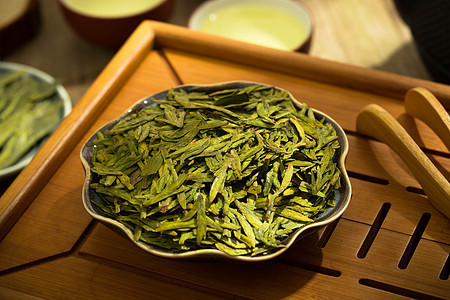
Introduction
Welcome to the world of Chinese green tea! Whether you’re new to this beverage or looking to refine your brewing skills, this guide provides practical tips to help you brew the perfect cup. From selecting high-quality leaves to mastering brewing techniques, you’ll learn how to enjoy a fragrant and delicious cup every time. Green tea is not only known for its subtle flavors but also its numerous health benefits, making it a great choice for both refreshment and wellness.
Understanding Chinese Green Tea
What is Chinese Green Tea?
Chinese green tea is celebrated for its delicate flavors and numerous health benefits. Unlike black tea, which undergoes fermentation, green tea is made from unoxidized leaves and is minimally processed. This method helps retain the tea’s natural antioxidants and nutrients, which can contribute to better heart health, improved brain function, and weight management.
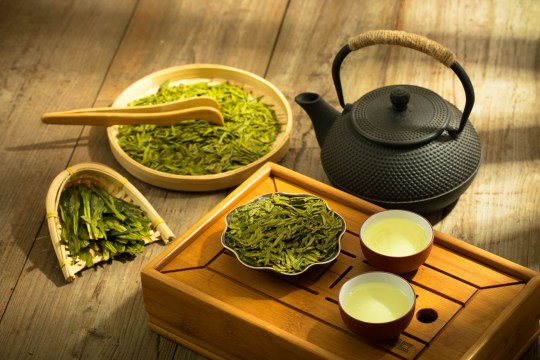
Types of Chinese Green Tea
China offers a diverse range of green teas, each with unique flavor profiles and brewing requirements. Here are some popular varieties:
Longjing Tea: Known for its sweet, nutty flavor and flat, sword-shaped leaves. This tea is often praised for its smooth and mellow taste, making it a favorite among tea enthusiasts.
Biluochun Tea: Famous for its fruity and floral aroma with tightly curled leaves. This tea provides a refreshing and complex flavor experience that is both delicate and invigorating.
Huangshan Maofeng Tea: Features a delicate floral taste with a hint of chestnut. Its light and fragrant profile makes it ideal for those who appreciate a subtle yet flavorful brew.
Selecting Quality Green Tea
Choosing the Right Tea Leaves
To brew a flavorful cup, start with high-quality leaves. Opt for whole, unbroken leaves as they generally offer better flavor and aroma. Vibrant green leaves usually indicate high quality and freshness. Look for tea that has been recently harvested and processed, as this often results in a more vibrant and aromatic brew.
Where to Buy Quality Green Tea
Purchase your tea from reputable merchants or specialty stores. At Orient Eco Tea , we work with over 30 top-quality producers in China to offer you the finest options, handpicked and directly sourced. Our curated selection ensures that you receive only the best green teas available, directly from their origins.
Brewing Techniques
Essential Equipment
To brew Chinese green tea, you’ll need:
Tea Leaves: Fresh and high-quality. Investing in high-quality leaves can significantly enhance your tea-drinking experience.
Teapot or Gaiwan: Traditional Chinese brewing vessels that help maintain the optimal temperature for steeping. A gaiwan is especially useful for its versatility and ease of use.
Filtered Water: To avoid impurities that can affect flavor. Using filtered water ensures that the true taste of the tea is preserved.
Tea Strainer: If using loose leaves. A good strainer will help prevent any small particles from ending up in your cup.

Brewing Temperature and Time
The ideal brewing temperature for green tea is between 160-180°F (70-80°C). Water that’s too hot can make the tea taste bitter. Steep the leaves for 1-3 minutes, adjusting based on your taste preference. For a more delicate flavor, start with a shorter steeping time and gradually increase as needed.
Steps to make a perfect cup of Chinese green tea
Preheat Your Teapot: Pour hot water into the teapot, swirl it to warm the vessel, then discard the water. This step helps maintain the temperature throughout the brewing process.
Measure the Tea Leaves: Use about 1 teaspoon of leaves per 8-ounce cup. Adjust the amount based on your taste preference and the type of green tea.
Add Water: Pour hot, filtered water over the leaves. The water should be at the correct temperature to avoid scalding the leaves.
Steep: Let the tea steep for 1-3 minutes. Keep an eye on the color of the brew to determine when it’s ready.
Strain and Serve: Remove the leaves and pour the tea into cups. Enjoy your freshly brewed tea.
Tips for an Optimal Experience
Experiment with Ratios
Adjust the amount of leaves and brewing time according to your taste. Some varieties may require more or less time to reach their optimal flavor. Experiment to find your perfect balance and discover the nuances of different teas.
Rebrew the Leaves
Many green teas can be brewed multiple times. Each infusion provides a different flavor experience, so don’t hesitate to re-steep the leaves. This can also help you appreciate the full spectrum of flavors in your tea.
Proper Storage
To preserve freshness and flavor, store leaves in an airtight container, away from light, heat, and moisture. Proper storage ensures that your tea remains as vibrant and flavorful as when you first purchased it.
Conclusion
Brewing Chinese green tea is an art that blends tradition with personal taste. By following these tips and exploring different types of tea, you can enjoy a perfect cup every time. For premium options and detailed information, visit Orient Eco Tea . Our selection features top-grade teas sourced directly from China’s finest producers.
Additional Resources
For more insights into tea varieties and brewing techniques, check out Tea Enthusiast’s Guide . This resource offers comprehensive information to deepen your understanding and appreciation of different teas.
Reprinted with permission from Orient Eco Tea, original link: [https://www.orientecotea.com](https://www.orientecotea.com).
2 notes
·
View notes
Text

Warhol, Andy. Campbell's Soup Cans. 1962, pop art, The Museum of Modern Art, New York.
“I used to have the same lunch every day, for 20 years, guess, the same thing over and over again. Someone said my life has dominated me; liked that idea.”
The "Campbell's Soup Cans" series highlights the homogeneity and conformity of consumer culture. The cans are identical, suggesting a standardized and mass-produced product, yet subtle differences between each can. This suggests that even though we may be the same, we have the power to choose our own path and be unique, despite society's pressure to conform. The various soup flavors can represent different personality types or archetypes, allowing the viewer to select which one they identify with. This individual choice and agency is a central aspect of Jungian psychology, which emphasizes the journey towards self-discovery and individuation.
THE SOUP SPECTRUM: How to navigate Campbell's soup selection
Tomato - The Rebel: bold and unorthodox, challenges the status quo of traditional soups with its vibrant and tangy flavor.
Chicken Noodle - The Mother: nurturing and comforting, provides warmth and sustenance like a hug in a bowl.
Split Pea with Ham - The Destroyer: powerful and transformative, brings about necessary change to the palate through the destruction of preconceived notions of what a soup should taste like.
Beef - The Warrior: strong and resilient, fights for a place on the soup menu with its hearty and robust flavor.
Black Bean - The Seeker: restless and questioning, seeks out new flavor combinations and knowledge about the soup world.
Consomme - The Sage: wise and knowledgeable, offers simple but profound wisdom to elevate the soup experience.
Cream of Asparagus - The Maiden: innocent and pure, represents delicacy and refinement with its smooth and elegant texture.
Cream of Mushroom - The Magician: mystical and transformative, turns ordinary ingredients into something extraordinary with its rich and velvety texture.
Cream of Onion - The Trickster: mischievous and unpredictable, adds a touch of humor and subversion to the soup experience with its unexpected sweetness and complexity.
Cream of Potato - The Creator: innovative and resourceful, turns simple ingredients into a satisfying and comforting meal with its creamy and filling texture.
Lentil - The Survivor: resilient and adaptable, can thrive in a variety of soup environments with its earthy and hearty flavor.
Manhattan Clam Chowder - The Explorer: curious and adventurous, seeks out new flavor profiles and experiences with its unique blend of seafood and tomato flavors.
New England Clam Chowder - The Guardian: protective and loyal, defends the tradition and legacy of classic soup recipes with its creamy and comforting texture.
Shrimp Bisque - The Siren: seductive and alluring, draws in with its rich and indulgent creaminess, leaving a lasting impression on the palate.
Vegetarian Vegetable - The Liberator: nourishing force that frees the body from toxins and provides essential nutrients
Broccoli Cheese - The Lover: passionate and comforting, satisfies the palate with its rich and creamy texture.
Vegetable Beef - The Hero: hearty and dependable, always there to provide strength and nourishment in times of need.
Green Pea - The Child: smooth and delicate, with a pure and childlike essence that inspires wonder and curiosity.
Cream of Celery - The Mentor: smooth and sophisticated, offering a creamy blend of knowledge and experience to help guide and mentor others.
Minestrone - The Networker: a vibrant and diverse blend of ingredients, bringing together different flavors and personalities to form strong and enduring connections.
Mulligatawny - The Shapeshifter: a tantalizing and enigmatic blend of spices and flavors, capable of shifting and adapting to different situations and contexts.
Old Fashioned Tomato Rice - The OutKast: a bold and unorthodox blend of classic flavors, standing out from the crowd and challenging traditional notions of what a soup can be.
Onion - The Shadow: a deep and complex mixture, with layers of flavor that reveal a mysterious and enigmatic essence that others may find intimidating.
Pea Soup - The Jester: a light and whimsical blend, with a playful and humorous spirit that never fails to bring a smile to others' faces.
Pepper Pot - The Villain: a potent and fiery blend, with a devious and malicious spirit that seeks to manipulate and control others for its own gain.
Potato with Bacon - The Father: a warm and comforting blend, with a hearty and nurturing essence that provides comfort and protection to those in need.
Scotch Broth - The Judge: a fair and impartial blend, with a strong and savory essence that represents justice and accountability.
Tomato Rice - The Queen/King: a rich and regal blend, with a commanding and charismatic essence that inspires loyalty and devotion in all who taste it.
Turkey Noodle - The Empathic: a comforting and compassionate blend, with a soothing and empathetic essence that understands and connects with the emotions of others.
Bean with Bacon - The Observer: a rich and hearty blend, with a deep and perceptive essence that sees and understands things others might miss.
Cheddar Cheese - The Oracle: a rich and flavorful blend, with a wise and insightful essence that provides knowledge and guidance to those who seek it.
Chicken with Rice - The Messenger: a clear and persuasive blend, with a smooth and communicative essence that delivers important messages and inspires action.
21 notes
·
View notes
Text
A Supplement Regimen Fortified by Greens: My Experience with Tonic Greens

In my ongoing pursuit of well-being, I have consistently sought methods to augment my diet with a wider range of beneficial nutrients. While I prioritize whole food consumption, my schedule and, admittedly, taste preferences sometimes limit my intake of essential greens. Therefore, I decided to explore the potential benefits of a powdered green supplement, ultimately opting for Tonic Greens. This product promises a comprehensive blend of nutrient-rich green vegetables, herbs, and other plant-based ingredients, formulated to address potential dietary gaps.
A Composition Rich in Phytonutrients and Digestive Support:
A primary factor influencing my choice of Tonic Greens was its impressive ingredient profile. The formula incorporates a diverse array of greens, including spinach, kale, spirulina, and chlorella. These vegetables are well-recognized as significant sources of essential vitamins, minerals, and antioxidants. Additionally, they are rich in phytonutrients, naturally occurring plant compounds with a growing body of research supporting their health benefits. Beyond the greens, Tonic Greens includes ingredients specifically targeted towards digestive health. Prebiotic fibers and digestive enzymes contribute to a smoother digestive process, promoting better nutrient absorption from both food and the supplement itself. This focus on gut health is a welcome addition, as a healthy gut microbiome is increasingly recognized as crucial for overall well-being.
Effortless Mixing and Surprisingly Palatable:
While taste can be a concern with green supplements, I was pleasantly surprised by Tonic Greens. The powder dissolves readily in water or my preferred smoothie base, and the berry flavour is genuinely enjoyable. Unlike some green powders that leave an unpleasant aftertaste, Tonic Greens integrates seamlessly into my daily routine without compromising palatability. The ease of mixing combined with the pleasant flavour encourages consistent use, a vital factor for reaping the long-term benefits of any supplement.
Enhanced Energy Levels Throughout the Day and Potential Long-Term Benefits:
Since incorporating Tonic Greens into my regimen, I have observed a notable improvement in my energy levels. Previously, I encountered afternoon slumps that disrupted my productivity. However, I now experience a more sustained sense of focus and energy throughout the workday. The inclusion of ingredients like spirulina and ashwagandha, known for their natural energy-supporting properties, appears to be contributing to this positive shift. While I acknowledge that individual experiences may vary, some early research suggests that the long-term use of green vegetable powders may offer additional benefits such as improved cognitive function and a strengthened immune system.
Supporting Overall Wellness and Peace of Mind:
Beyond the energy boost and potential long-term benefits, I have perceived a general sense of improved well-being since integrating Tonic Greens into my routine. The supplement incorporates prebiotic fibres and digestive enzymes, which seem to be having a positive effect on my digestion. Furthermore, the formula boasts a blend of immune-supporting ingredients, including vitamins, minerals, and antioxidants. In today's environment, where a strong immune system is paramount, this comprehensive approach offers peace of mind.
A Convenient and Effective Strategy for Dietary Optimization:
In conclusion, my experience with Tonic Greens has been thoroughly positive. It offers a convenient and palatable approach to ensuring daily consumption of essential vitamins, minerals, antioxidants, and other beneficial plant compounds. Whether your goals involve enhanced energy levels, improved digestion, supporting your immune system, or simply fortifying your dietary intake with a wider range of greens, Tonic Greens presents itself as a compelling option. It is important to note that, as with any supplement, consulting your physician before starting Tonic Greens is advisable.
#active lifestyle#fitnessjourney#healthy recipes#vegan#gluten free#plantbased#tonicgreens#greensupplement#health supplements#superfoodpowder#greendrinks#healthyliving#wellness#nutritionalgaps#digestivesupport#guthealth
2 notes
·
View notes
Text
Deliciously Healthy: Exploring the Benefits of Low-Calorie Meal Delivery Services

Low-calorie meal delivery services offer a convenient and effective way for individuals to maintain a healthy lifestyle while managing their calorie intake.
Some benefits associated with Low-Calorie Meal Delivery services:
1. Portion Control:
Low-calorie meal delivery services often provide pre-portioned meals, helping individuals avoid overeating. This can be especially beneficial for those who struggle with portion control or have difficulty estimating appropriate serving sizes.
2. Convenience:
These services save time on meal planning, grocery shopping, and cooking. For busy individuals or those with hectic schedules, having nutritious, low-calorie meals delivered can be a time-saving solution that supports a healthier lifestyle.
3. Nutritional Balance:
Low-calorie meal delivery services typically focus on creating well-balanced meals that provide essential nutrients while keeping calorie counts in check. This can be particularly helpful for individuals looking to lose weight or maintain a specific caloric intake.
4. Weight Management:
For those aiming to achieve weight loss goals, such services can be a valuable tool. The controlled calorie content and balanced nutritional profiles can contribute to a more structured and sustainable approach to weight management.
5. Variety and Flavor:
Many low-calorie meal delivery services offer a diverse menu with a range of flavors and cuisines. This variety can help prevent boredom with a restricted diet and make it easier for individuals to stick to their nutritional goals.
READ FOR MORE INFO SO PLEASE CLICK HERE & VISIT OUR MAIN WEB PORTAL
#mealplanforweightloss#lowcaloriefooddelivery#lowcaloriemealdeliveryservice#healthymealsforweightloss#dietplanforweightloss
3 notes
·
View notes
Text
Exploring Citrus Hybrids: Are They More Nutritious Than Traditional Citrus Fruits?

Have you ever wondered if there is more to citrus fruits than meets the eye? While traditional citrus fruits like oranges and lemons have long been praised for their nutritional benefits, there is a new player in town: citrus hybrids.
These intriguing fruits, created through the combination of different citrus varieties, have been gaining popularity in recent years. But are they really more nutritious than their traditional counterparts?
In this discussion, we will explore the world of citrus hybrids, comparing their nutritional value to that of traditional citrus fruits and uncovering the potential health benefits they may offer.
Get ready to discover a whole new side of citrus that may have you questioning your fruit choices.
History of Citrus Hybrids
Let’s dive into the fascinating history of citrus hybrids, where the blending of different citrus species has created a diverse and delicious array of fruits. The practice of creating citrus hybrids dates back thousands of years to ancient China and India. It was the Chinese who first discovered that by cross-pollinating different citrus species, they could produce new varieties with unique flavors and characteristics. This knowledge eventually made its way to the Mediterranean region, where citrus cultivation became widespread during the Islamic Golden Age.
One of the most famous citrus hybrids is the Meyer lemon, a cross between a regular lemon and an orange. This hybrid was named after Frank Nicholas Meyer, a Dutch explorer who discovered it in China in the early 20th century. The Meyer lemon quickly gained popularity for its sweeter and less acidic taste compared to regular lemons.
Another notable citrus hybrid is the tangelo, a cross between a tangerine and a grapefruit. This hybrid was developed in the late 19th century in Florida and is loved for its juicy and tangy flavor.
The history of citrus hybrids is a testament to human ingenuity and our desire to create new and delicious foods. Thanks to the blending of different citrus species, we can enjoy a wide variety of fruits that offer unique flavors and nutritional benefits.
Nutritional Comparison: Citrus Hybrids Vs. Traditional Citrus Fruits
Citrus hybrids offer a unique and diverse nutritional profile compared to traditional citrus fruits. When it comes to their nutritional composition, these hybrids bring something new to the table. Here’s a breakdown of the key differences between citrus hybrids and their traditional counterparts:
Higher Vitamin C Content: Citrus hybrids often have higher vitamin C levels compared to traditional citrus fruits. This essential nutrient plays a crucial role in supporting the immune system and promoting collagen production.
Increased Antioxidant Levels: Citrus hybrids tend to exhibit higher antioxidant activity than traditional citrus fruits. Antioxidants help protect the body against harmful free radicals and reduce the risk of chronic diseases.
Enhanced Nutrient Variety: Citrus hybrids showcase a wider range of nutrients compared to traditional citrus fruits. They may contain additional vitamins, minerals, and bioactive compounds that contribute to overall health and well-being.
While traditional citrus fruits like oranges and lemons still provide excellent nutritional value, citrus hybrids offer an exciting alternative with their unique combination of nutrients. Incorporating a variety of citrus hybrids into your diet can help diversify your nutrient intake and provide additional health benefits.
Health Benefits of Citrus Hybrids

Incorporating citrus hybrids into your diet can offer a range of health benefits. These hybrids, which are a result of crossbreeding different citrus fruits, combine the best traits of their parent fruits, resulting in a unique nutritional profile.
One of the key health benefits of citrus hybrids is their high vitamin C content. Vitamin C is an essential nutrient that supports immune function, helps in the production of collagen for healthy skin, and acts as a powerful antioxidant that protects cells from damage.
Citrus hybrids also contain a good amount of fiber, which is beneficial for digestion and can help prevent constipation. Fiber promotes a healthy gut microbiome and can contribute to weight management by promoting feelings of fullness.
Furthermore, citrus hybrids are rich in various antioxidants, such as flavonoids and carotenoids. These antioxidants help reduce inflammation in the body and protect against chronic diseases like heart disease and certain types of cancer.
Lastly, citrus hybrids are a good source of potassium, which plays a crucial role in maintaining healthy blood pressure levels and supporting proper muscle and nerve function.
Incorporating citrus hybrids into your diet can be a delicious and nutritious way to enhance your overall health. So go ahead and enjoy the wide range of health benefits these citrus hybrids have to offer.
Nutritional Benefits of Citrus Hybrids
The world of citrus fruits is vast and varied, with hybrids like limequats offering a unique blend of flavors and nutritional benefits. These hybrids are more than just a culinary delight; they are a powerhouse of vitamins and minerals. Limequats, a cross between limes and kumquats, exemplify this with their high vitamin C content and other essential nutrients. We have to say that this citrus is a hybrid that is born from a cross between lime and kumquat. Such citrus hybrids are not only refreshing but could also play a role in supporting heart health and preventing kidney stones. Their distinct nutritional profile makes them a valuable addition to a health-conscious diet.
Factors Affecting Nutritional Value in Citrus Hybrids
To understand the nutritional value of citrus hybrids, it’s important to consider the factors that influence their overall nutrient composition. These factors can vary depending on the specific hybrid, but there are several common elements that play a role in determining the nutritional value:
Genetic makeup: The genetic characteristics of a citrus hybrid can greatly impact its nutritional profile. Different hybrids may possess varying levels of vitamins, minerals, and other beneficial compounds.
Growing conditions: The environment in which citrus hybrids are cultivated can affect their nutritional content. Factors such as soil quality, climate, and cultivation practices can all influence the nutrient levels in the fruits.
Maturity and ripeness: The stage at which citrus hybrids are harvested can impact their nutritional value. Fruits that are picked at the optimal level of maturity and allowed to fully ripen tend to have higher nutrient content than those harvested prematurely.
Incorporating Citrus Hybrids Into a Healthy Diet
One way to enhance your diet with nutritious citrus hybrids is by incorporating them into your daily meals. These hybrids offer a unique combination of flavors and nutrients that can add variety and health benefits to your diet.
Start your day with a refreshing glass of citrus hybrid juice, such as a tangelo or a citrange. These hybrids have a tangy and sweet taste that can wake up your taste buds and provide a boost of vitamin C and other essential nutrients.
For a quick and easy snack, grab a clementine or a mandelo. These hybrids are small and easy to peel, making them a convenient and healthy option when you’re on the go.
For a more substantial meal, try adding citrus hybrids to your salads, stir-fries, Learn more here, or grilled dishes. The vibrant colors and zesty flavors of these fruits can elevate your dishes and provide a burst of freshness.
Don’t forget to experiment with different citrus hybrids to discover your favorite combinations and recipes. By incorporating citrus hybrids into your daily meals, you can enjoy their unique flavors while reaping the nutritional benefits they offer.
Frequently Asked Questions
Are Citrus Hybrids Genetically Modified Fruits?
Citrus hybrids, are they genetically modified fruits? Yes, they are. By combining the genes of different citrus species, scientists create hybrids with desirable traits like disease resistance or improved flavor. These modifications are made through traditional breeding techniques, not genetic engineering.
Can Citrus Hybrids Be Grown in Any Climate?
Yes, citrus hybrids can be grown in a variety of climates. They’re specifically bred to have traits that make them more adaptable to different environmental conditions. This means that they’re able to thrive in both warm and cold climates, making them a versatile choice for growers.
Whether you live in a tropical region or a colder area, you can enjoy the benefits of growing citrus hybrids in your own backyard.
How Do Citrus Hybrids Compare in Taste to Traditional Citrus Fruits?
When it comes to taste, citrus hybrids offer a unique flavor that sets them apart from traditional citrus fruits.
The combination of different citrus varieties in hybrids creates a delightful blend of sweet and tangy notes.
You’ll experience a burst of refreshing flavors that can vary depending on the specific hybrid.
From zesty and aromatic to juicy and tropical, citrus hybrids provide a diverse and exciting taste experience that can add a delightful twist to your culinary creations.
Are There Any Concerns About the Safety of Consuming Citrus Hybrids?
There are concerns about the safety of consuming citrus hybrids. It’s important to consider potential risks when trying new varieties. While hybrid citrus fruits are generally safe to eat, there’s always a small chance of adverse reactions or allergies.
It’s recommended to consult with a healthcare professional if you have specific concerns or medical conditions. Overall, moderation and listening to your body’s response are key when trying any new food.
Are Citrus Hybrids More Expensive Than Traditional Citrus Fruits?
Citrus hybrids can sometimes be more expensive than traditional citrus fruits. The cost of citrus hybrids can vary depending on factors such as their availability, demand, and cultivation methods.
Since citrus hybrids are often created by crossing different varieties of citrus fruits, they may require more intensive care and specialized growing conditions, which can drive up their price.
However, it’s worth noting that the cost of citrus hybrids can also vary depending on the specific hybrid and the market in which it’s sold.
Conclusion
In conclusion, exploring citrus hybrids has shown that they can be more nutritious than traditional citrus fruits.
The history of citrus hybrids reveals the continuous efforts to enhance their nutritional value.
The health benefits of these hybrids are significant, and factors such as cultivation methods and genetic modifications play a role in their nutritional value.
Incorporating citrus hybrids into a healthy diet can provide a boost of nutrients and contribute to overall well-being.
#citrus fruits#fruits#Lemon#Grapefruit#Sweet orange#Mandarin orange#Pomelo#Citron#Key lime#orange citrus fruits
3 notes
·
View notes
Text

Agency and Authenticity
In Cooking
Agency and authenticity are two concepts that enhance one's cooking skills and contribute to good health.
Agency refers to the ability to take charge and make independent choices, being in control of one's actions and decisions.
In the context of cooking, having agency means being able to make conscious and deliberate choices in the ingredients, techniques, and recipes one uses.
When individuals have agency in their cooking, they have the power to tailor their meals to suit their preferences, dietary needs, and health goals.
For example, a person who has agency in their cooking can choose to incorporate more plant-based ingredients, reduce salt or sugar, and experiment with different flavors and spices, all of which can contribute to a healthier and more balanced diet.
Authenticity is about valuing one's unique experiences, heritage, and culture.
Authenticity involves embracing and celebrating one's culinary traditions and cultural heritage.
This means learning and using traditional recipes, authentic ingredients, and cooking methods passed down through generations.
Cooking with authenticity connects individuals to their roots. It enables them to explore and appreciate diverse culinary practices from around the world.
It can introduce a wider range of flavors, ingredients, and cooking methods into their repertoire that enhances the nutrient profile and taste of their meals.
When agency and authenticity are combined in cooking, they empower individuals to take greater control of their culinary experiences and make healthier choices.
By having agency, individuals can select fresh and nutritious ingredients, avoid processed foods, and experiment with healthy recipes.
Authenticity allows individuals to create meals that are not only nourishing but also culturally rich, satisfying both their physical and emotional well-being.
Incorporating agency and authenticity into cooking can contribute to a more enjoyable and sustainable approach to food, promoting good health and overall well-being.
2 notes
·
View notes
Text
Nourishing Health with Balance of Nature Vitamins
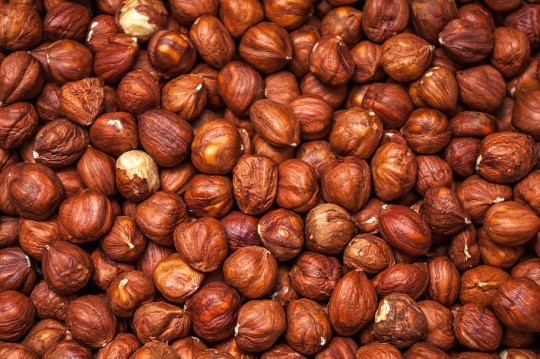
In the pursuit of a healthier lifestyle, Balance of Nature vitamins emerges as a beacon of natural nourishment. These supplements offer a unique approach by harnessing the essence of real fruits and vegetables, providing a wholesome blend of essential nutrients for overall well-being.
The Essence of Whole-Food Nutrition
Real Ingredients: Balance of Nature vitamins stand out by sourcing their nutrients directly from fruits and vegetables. This ensures a holistic intake of vitamins, minerals, and antioxidants, mirroring the goodness found in nature.
Comprehensive Nutrient Profiles: The carefully crafted formulas encompass a spectrum of vital nutrients, delivering a balanced combination that supports immune health, energy levels, and overall vitality.
Unveiling the Benefits
Immune System Support: Rich in immune-boosting nutrients and antioxidants, these vitamins contribute to a resilient immune system, helping your body ward off potential threats.
Sustained Energy: The blend of vitamins and minerals is designed to provide a steady source of energy, combating fatigue and enhancing overall vitality.
Digestive Harmony: Some formulations include fiber-rich components, promoting digestive health and maintaining a balanced gut microbiome.
Heart-Friendly Formulas: With heart-healthy nutrients like potassium, Balance of Nature vitamins contribute to cardiovascular wellness, complementing heart-conscious lifestyles.
Integrating Balance of Nature into Your Routine
Professional Guidance: Before incorporating any supplement, consulting with a healthcare professional is advisable to ensure compatibility with individual health needs.
Consistent Usage: To experience the full benefits, consistency is key. Incorporate these vitamins into your daily routine as directed for optimal results.
Balanced Living: While supplements play a role, they work best alongside a well-rounded diet and a healthy lifestyle. Strive for a diverse and nutrient-rich diet to enhance overall well-being.
Conclusion
Balance of Nature vitamins offers a pathway to enhanced vitality through the simplicity of nature's bounty. Individual experiences may vary, so paying attention to your body's response and seeking professional advice when needed is crucial. Embark on a journey of nourishment, embracing the wholesome benefits that Balance of Nature vitamins bring to your pursuit of health and wellness.
#BALANCEOFNATUREVITAMINS#BALANCEOFNATUREMULTIVITAMIN#BALANCEOFNATUREVITAMINSFRUITSANDVEGETABLES#BALANCEOFNATUREVITAMINSREVIEWS#SUCONTRALDREVIEWS
2 notes
·
View notes
Text
Exploring the Benefits of Balance of Nature Vitamins for Enhanced Well-being
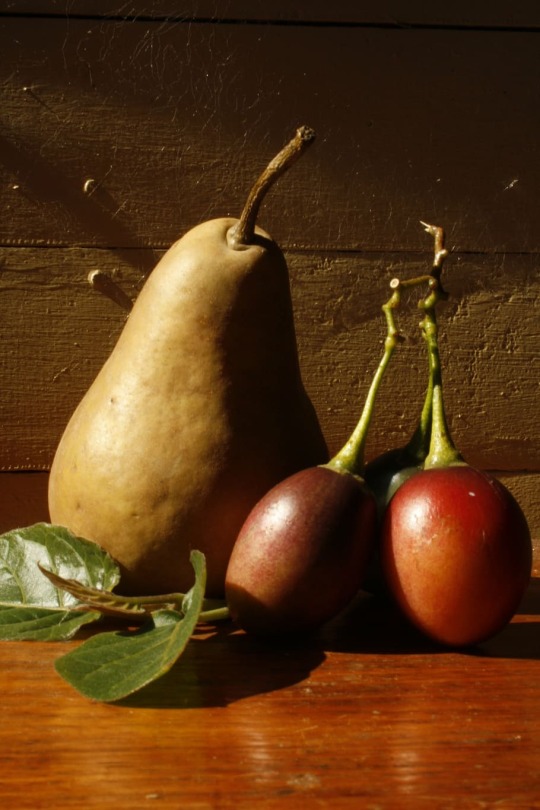
Balance of Nature is a brand that offers whole food supplements, including fruit and vegetable capsules. The company claims that its products provide essential nutrients and promote overall well-being. Here are some potential benefits that people associate with Balance of Nature vitamins:
Nutrient Density:
Balance of Nature supplements are derived from whole foods, which means they contain a variety of vitamins, minerals, antioxidants, and other phytonutrients found naturally in fruits and vegetables. This can provide a more comprehensive nutrient profile compared to synthetic supplements.
Convenience:
For individuals who struggle to meet their daily fruit and vegetable intake, Balance of Nature offers a convenient alternative. The capsules can be taken easily, making it simpler for people with busy lifestyles to get a variety of nutrients.
Support for Immune Health:
Fruits and vegetables are rich in antioxidants and immune-boosting nutrients, such as vitamin C, vitamin A, and various phytonutrients. These may contribute to a strengthened immune system.
Improved Digestion:
Whole food supplements often contain fiber, which can aid in digestion and promote a healthy gut. Fiber is essential for maintaining regular bowel movements and supporting overall digestive health.
Energy and Vitality:
Nutrient-rich diets are associated with increased energy levels and overall vitality. The diverse range of nutrients in Balance of Nature supplements may contribute to improved energy and well-being.
Antioxidant Support:
Fruits and vegetables are known for their high antioxidant content. Antioxidants help neutralize free radicals in the body, which can contribute to a lower risk of chronic diseases and support overall health.
Heart Health:
Certain nutrients found in fruits and vegetables, such as potassium and fiber, are associated with heart health. A diet rich in these nutrients may help maintain healthy blood pressure and cholesterol levels.
Joint and Bone Health:
Some fruits and vegetables are good sources of vitamins and minerals essential for bone health, such as calcium, vitamin K, and magnesium. These nutrients may contribute to overall bone and joint well-being.
It's important to note that while whole food supplements can offer benefits, they are not a replacement for a balanced and varied diet. It's always a
#BALANCEOFNATUREVITAMINS#BALANCEOFNATUREMULTIVITAMIN#BALANCEOFNATUREVITAMINSFRUITSANDVEGETABLES#BALANCEOFNATUREVITAMINSREVIEWS#SUCONTRALDREVIEWS
2 notes
·
View notes
Photo
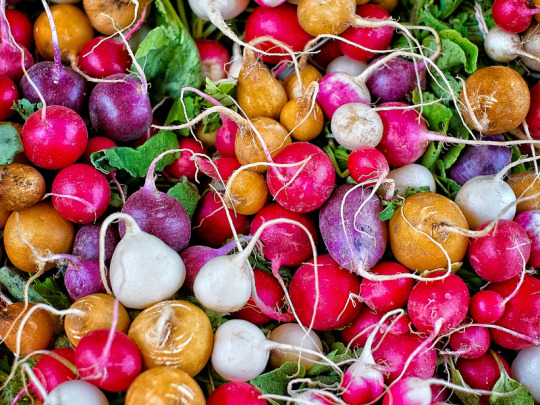
June is a joyfully colorful month in this region for several reasons! For starters, by the time June’s warmer temperatures seep into downstate New York, the growing season is entering full swing with a bright palette of fresh produce arcing through the farmstands in our markets. Plus, June is of course Pride Month – symbolized by the six-striped rainbow flag that cheerfully adorns flag poles, government buildings, store fronts and many other public spaces throughout the course of this month. Rainbows have risen to become a symbol of good fortune, positivity, diversity and inclusiveness in our popular culture, so it’s no coincidence that the phrase “eat the rainbow” is used by dieticians and other medical professionals to encourage people to put more fresh produce on their plates. In fact, consuming a variety of colorful fruits and veggies is the best way to introduce the most nutrients into your diet, without adding excessive calories. The naturally occurring pigments in these foods indicate different compounds with different properties that have been shown to provide a wide range of unique health benefits. So, to aid in the quest to taste and embrace the many seasonal colors of this month, here are some rainbow-hued items to look out for in the farmers market this weekend: Purple daikon Purple daikon radishes are at their peak during winter and spring months and are easily spotted at farmstands thanks to their bright violet skins offset by emerald leaves. This exotically hued root vegetable is native to Asia where daikon has been cultivated for thousands of years. Purple daikon is a specialty hybrid belonging to the same Brassicaceae family as the red radish. Their globular roots are oblong and cylindrical in shape with a thin tapered “tail.” The striking purple pigment is due to a type of flavonoid called anthocyanin -- the same antioxidant that gives blueberries their color, which will be entering the markets soon. If you don’t see purple daikon at the farmers market, look for watermelon radish, a round, green-white radish that reveals a dazzling hot pink interior when sliced open. Daikon radish can be enjoyed raw thanks to its crispy, crunchy texture and spicy, peppery profile that will add a splash of color and extra dimension to summer salads, grain bowls, pasta dishes and crudité platters. It can also be cooked using a variety of methods, including tossing the roots in olive oil, salt and pepper and roasting them at 375 °F for 10-15 minutes or until easily pierced with a fork. Don’t toss your leaves though! If they are still fresh and unblemished, radish greens of all kinds are delicious pan sautéed with thinly sliced garlic and olive oil then spritzed with a little freshly squeezed lemon juice. Red beets Beets grow in a rainbow of colors from gold to magenta to stunning candy cane-striped Chioggia beets. They derive their jewel-like hues from betalain, a type of natural plant pigment that has antioxidant and anti-inflammatory properties. The most common kind of beets you’ll find in the farmers market are the reddish/purple variety, but you can generally locate them in every color. Beets burst back into season this month so grab a big bunch of the spherical beauties this weekend and “get down to the beet”: * Beet salad with Goat Cheese and Balsamic * Balsamic and Fresh Thyme Roasted Beets * Easy, Homemade Pickled Beets Green peas Peas are cool weather-loving plants which means that June is a prime month for these exploratory climbers before they become sapped by the arrival of hotter temps. Peas contain a variety of minerals including magnesium, potassium and calcium and are also rich in antioxidant nutrients like vitamin C, carotenoids and flavanols. Snow, snap, and garden peas are all members of the legume family, but there are subtle differences between the three. Though they may look similar, each has a different texture and level of sweetness:
Garden (aka sweet or English) peas: Pods are firm and rounded and are shelled then discarded (toss them in your compost!) to retrieve the sweet peas inside which can be eaten raw or cooked. These are the common green peas that are sold shelled and frozen.
Snow peas: Snow peas are often used in stir-fries. The whole pod is edible and they are flat with very small peas inside. The tough “strings” along the seams are usually peeled back and removed before eating. Snow peas are mildly flavored and can be served raw or cooked.
Snap peas: A cross between snow peas and garden peas, the whole pod is eaten and has a crunchy texture and sweet flavor. Snap peas may be eaten raw or cooked. Stringless varieties are now available.
Of course, there are many more ways to shop the rainbow at the farmers market this week: orange carrots, canary yellow oyster mushrooms, blue potatoes, carmine red strawberries and the list goes on! And, if you want to eat your way to some extra credit, pick up a bunch of beautiful rainbow chard! The stalks come in an array of bright hues and pretty pastels from white, yellow, red, purple, pink and striped topped with vibrant, leafy greens.
2 notes
·
View notes
Text
Why India is a Leading Supplier of Red Chilli in the Global Market
India has firmly established itself as a major player in the global spice trade, especially in the production and export of red chilli. From its ideal growing conditions to its wide variety of chilli types, India is unmatched in its ability to supply the world with high-quality red chillies. With companies like Eurosun India leading the way, India has cemented its reputation as a trusted provider of red chilli products on the international stage. Here’s an exploration of why India is the top destination for red chilli.

The Ideal Climate and Soil for Red Chilli Cultivation in India
India’s climate and soil are naturally suited for red chilli cultivation, providing ideal conditions for producing premium-quality chillies. Major chilli-producing states like Andhra Pradesh, Telangana, Karnataka, and Madhya Pradesh benefit from nutrient-rich soil and a warm climate that enhances the vibrant color and rich flavor of red chillies. This agricultural advantage is one of the reasons why India is a top Red Chilli Supplier from India.
A Hub of Varieties: Types of Red Chilli Cultivated in India
India offers a vast range of red chilli varieties, each known for its unique flavor profile and heat intensity. Popular types like Byadgi, Guntur, and Kashmiri chillies are particularly valued for their deep color and distinct taste. This diversity enables Red Chilli Traders from India to cater to a variety of culinary preferences around the world, supplying everything from mild to extra-hot chillies to meet global demand.
Red Chilli Supplier from India: Leading Producers and Regions
India’s red chilli-producing regions are home to some of the world’s top chilli suppliers. These suppliers capitalize on the country’s rich agricultural resources and expertise to produce chillies that meet international quality standards. As a leading Red Chilli Supplier from India, these regions ensure consistent quality, flavor, and supply, satisfying the needs of international buyers across diverse markets.
Red Chilli Manufacturer in India: Quality Standards and Processing Techniques
Indian chilli manufacturers are essential in ensuring quality by adhering to strict international standards, including FSSAI, ISO, and HACCP certifications. These Red Chilli Manufacturer in India facilities use a range of traditional and modern processing methods—like sun-drying, grinding, and precision packaging—to deliver pure, flavorful products that meet the high expectations of global consumers.
Red Chilli Exporter from India: Contribution to International Markets
India’s red chilli export industry is thriving, with exports to countries across North America, Europe, and Asia. As a leading Red Chilli Exporter from India, India benefits from competitive pricing, robust logistics, and the ability to meet growing global demand. With an extensive export network, Indian chillies are easily accessible, solidifying the country’s position as a leading exporter.
Red Chilli Wholesalers in India: Connecting Farmers to the World
Red Chilli Wholesalers in India are essential in linking farmers with the global marketplace. These wholesalers ensure that red chillies are distributed efficiently to both domestic and international markets, working closely with farmers to provide consistent supply and fair pricing. Wholesalers play a crucial role in stabilizing the red chilli supply chain and ensuring access to high-quality chillies.
Red Chilli Traders from India: The Role of Traders in the Supply Chain
Red Chilli Traders from India act as intermediaries, helping to bridge the gap between producers and global buyers. These traders manage logistics and ensure the consistent supply of fresh and dried chillies to international markets. Their involvement helps maintain price stability and timely deliveries, further reinforcing India’s reputation as a reliable chilli supplier.
Conclusion: India’s Future as a Leading Red Chilli Supplier
With ideal growing conditions, diverse chilli varieties, and adherence to strict quality standards, India is well-positioned to maintain its leadership in the global red chilli market. As demand for Indian chillies grows, the country’s expertise as a Red Chilli Supplier from India will ensure its continued success as a top supplier, manufacturer, and exporter of premium red chilli products. The future looks bright for India’s red chilli industry as it continues to meet the world’s need for quality spices.
#Red Chilli Supplier from India#Red Chilli Manufacturer in India#Red Chilli Exporter from India#Red Chilli Wholesalers in India#Red Chilli Traders from India
0 notes
Text

Discover the Distinctive World of Chakki Atta and Other Whole Grains
Understanding Chakki Atta's Uniqueness
Chakki Atta, primarily used in Indian households, is a type of whole wheat flour known for its rich nutritional profile. Unlike regular wheat flour, Chakki Atta is stone-ground, which preserves essential nutrients and fiber. This traditional milling method ensures that the flour retains its natural goodness, including proteins and essential oils, contributing to its unique aroma and flavor.
Chakki Atta, or Atta wheat flour, is not just about taste; its nutritional benefits are noteworthy. According to Bagaria Food, a leading manufacturer, Chakki Atta is packed with carbohydrates, essential vitamins, and a high fiber content that aids digestion and maintains energy levels. These nutrients are crucial for cognitive development and overall health.
Millet: The Ancient Grain Making a Comeback
Millets, known as ancient grains, are nutrient-rich, gluten-free staples used for centuries in various cultures. They are high in magnesium, phosphorus, and iron, supporting bone health and immune function. Millets are versatile in cooking, suitable for both savory and sweet dishes, and can enhance meal diversity and nutrition.
Barley and Its Health Benefits
Barley is a whole grain known for its high fiber content, especially beta-glucan, which helps lower cholesterol. Rich in vitamins and minerals, it's beneficial for antioxidant protection and maintaining stable blood sugar levels due to its low glycemic index. Barley's chewy texture and nutty flavor make it versatile in cooking, ideal for soups, stews, salads, and as a rice substitute.
Comparing Chakki Atta with Millet and Barley
While Chakki Atta, millet, and barley each offer unique benefits, the choice between them depends on dietary preferences and nutritional needs. Chakki Atta is ideal for those looking for a high-fiber, nutrient-rich flour for traditional flatbreads. In contrast, millet and barley provide gluten-free options with distinct health benefits. Chakki Atta is rich in fiber and nutrients, ideal for digestive health and energy. Millets benefit those on a gluten-free diet with high magnesium and iron, supporting vitality. Barley offers soluble fiber for heart health, lowering cholesterol, and stabilizing blood sugar. Choosing between them depends on individual dietary needs and health goals, as each grain has unique benefits for a balanced diet.
FAQs About Chakki Atta and Whole Grains
Q1: What makes Chakki Atta different from regular wheat flour?
A1: Chakki Atta retains more nutrients and fiber due to its stone-ground milling process, unlike regular wheat flour which may lose nutrients during processing.
Q2: Are millets suitable for gluten-intolerant individuals?
A2: Yes, millets are naturally gluten-free and are an excellent option for those with gluten intolerance.
Q3: How can barley be incorporated into daily meals?
A3: Barley can be used in soups, stews, salads, or as a rice substitute to add nutritional value and texture.
Exploring Bagaria Food's Chakki Atta: A Benchmark in Atta Wheat Flour
Bagaria Food's website offers insightful information on their premium Chakki Atta, a prime example of high-quality atta wheat flour. Bagaria Food's Chakki Atta is crafted using traditional stone-grinding to retain wheat's nutritional value. This ensures essential fibers, proteins, and oils are intact, resulting in a flour rich in taste and beneficial for a balanced diet. With careful wheat sourcing and emphasis on purity, it supports digestive health and energy, making it an excellent choice for rotis and flatbreads.
0 notes
Text
Protein Ingredients Industry Share and Specification forecast To 2030
The global protein ingredients market was valued at USD 77.69 billion in 2022 and is expected to grow at a revenue-based compound annual growth rate (CAGR) of 5.8% from 2023 to 2030. This steady growth is driven by rising demand for a variety of food products such as margarine, cold cuts, bakery items, spreads, yogurt, and milk sausages that use protein ingredients. Increased consumption of these protein-rich foods among health-conscious and elderly consumers is further fueling the market. The growing interest in these products stems not only from their nutritional benefits but also from specific functional properties, such as satiety, muscle repair, weight loss, and energy balance. These functions are made possible by innovative protein formulations containing diverse amino acid profiles, which present vast growth opportunities for the market.
The market has also experienced a notable rise in demand for animal-based protein products. In the U.S., demand for animal-derived protein is especially strong and is expected to continue growing in the near future. Companies that produce and distribute these products have undertaken supply chain initiatives to ensure a steady and reliable distribution network, supporting sustained market growth.
Gather more insights about the market drivers, restrains and growth of the Protein Ingredients Market
Plant-based protein ingredients, derived from crops like soy, canola, wheat, and pea, are also seeing significant demand. Soy protein, in particular, leads the plant-based category and is anticipated to grow rapidly over the forecast period. The Food and Drug Administration (FDA) has even approved a health claim that suggests soy protein, when consumed daily in four servings, can lower LDL cholesterol levels by around 10%. This endorsement has further boosted soy protein’s popularity as a health-supportive ingredient.
In addition to soy protein’s growth, technological advancements and innovative production methods are further propelling market expansion. Protein ingredients are now applied across diverse products, such as isolates, which have high dispersibility and fine particle size, making them ideal for dairy applications. Growing consumer awareness of health benefits associated with protein ingredients has been a major growth driver for the market in recent years and is likely to continue this trajectory.
Application Segmentation Insights:
In terms of applications, the food and beverage segment led the market in 2022, capturing a 39.21% revenue share, and it is expected to retain this leading position over the forecast period. Whey protein ingredients, for instance, are an affordable source of protein and are widely used in the bakery and confectionery sectors. Recent advancements in process design and technology have refined whey products, resulting in higher quality variations like demineralized whey, Whey Protein Isolates (WPIs), and Whey Protein Concentrates (WPCs). These improvements have enabled greater use of protein ingredients in various functional food products, making them nutrient-dense options for consumers.
Animal feed is another key application area projected to grow rapidly, with an estimated CAGR of 6.3% by revenue over the forecast period. The animal feed industry is focusing on reducing environmental impact, which has increased interest in alternative proteins for feed products. The need to improve animal feed formulations with high-protein content, particularly with non-GMO sources, is becoming a priority.
Traditional protein sources for animal feed, such as soybean meal and fishmeal, have become more expensive due to rising demand, limited availability, and environmental concerns. This shift has led to an increased interest in alternative protein sources like insect meal, algae, and single-cell proteins, which are generally more sustainable and cost-effective. By using these alternative proteins, the animal feed industry aims to meet nutritional needs while reducing dependency on conventional, high-cost protein sources, thereby enhancing the sector’s overall sustainability and cost-efficiency.
Order a free sample PDF of the Protein Ingredients Market Intelligence Study, published by Grand View Research.
0 notes